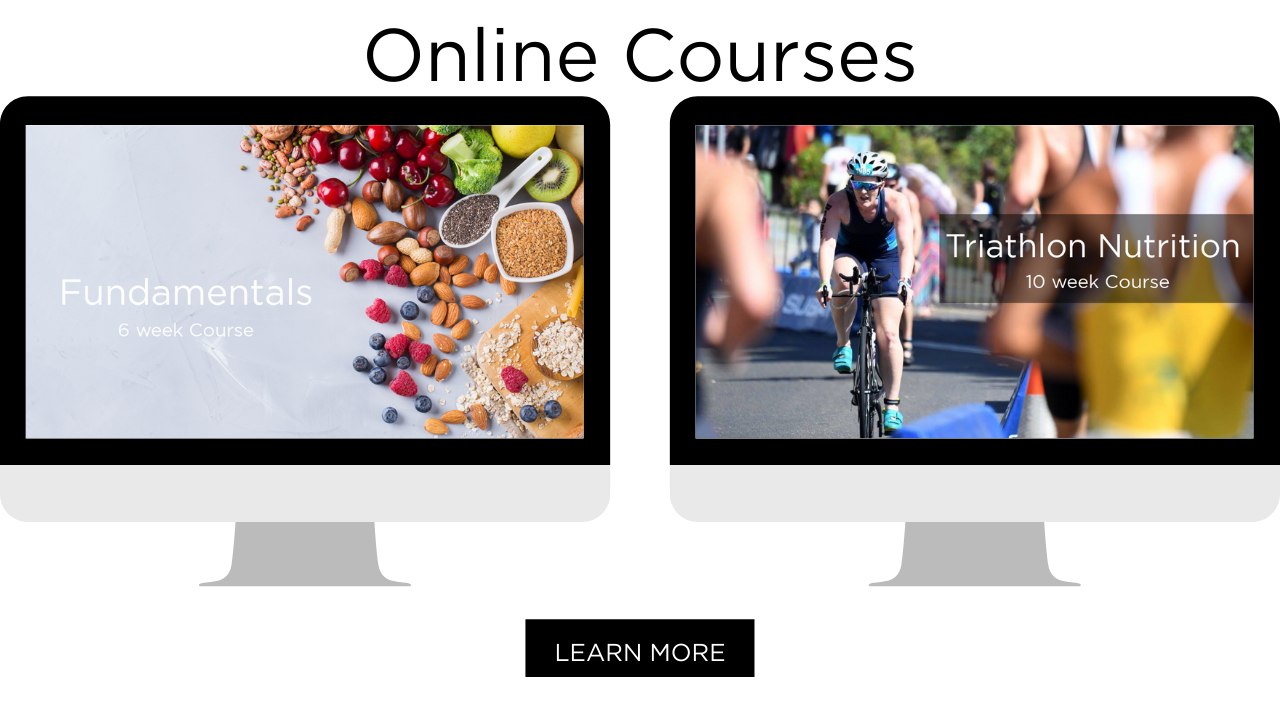Fat vs. Carbs: What’s best for sports performance?

There is so much media attention around low carbohydrate diets at the moment; it’s hard to decipher what is fact and what is fiction. Low-carbohydrate diets are not a new dietary concept by any means, yet they have made a popular comeback with claims of rapid weight loss and other health benefits. A quick Google search pulls over 2 million results in 0.3 seconds! Let’s have a look at some of the evidence and find some clarity around the concept…
Carbohydrate
Carbohydrate is a macronutrient found in foods such as bread, rice, quinoa, pasta, cereals, fruit, the starchy vegetables (potato, sweet potato and corn), legumes (chickpeas, lentils, red kidney beans) and dairy products (milk, yoghurt). It is also found in packaged foods such as sports drinks, gels and bars, soft drink, cordial, juice, honey, sugar, lollies and baked goods. When we eat carbohydrate-rich foods, they are digested and broken down into smaller building blocks, such as glucose, fructose and galactose. These building blocks are then absorbed across the stomach lining (some slowly, some quickly) into our bloodstream where they circulate for use as a source of fuel for exercise. Any excess is packaged up with water and stored in our muscles and liver for later use as glycogen. Once our glycogen stores are ‘full’, the leftover glucose is converted to fat and stored.
Glucose + H2O = Glycogen
Fat
Fat is also a macronutrient found in foods such as nuts, seeds, oils (e.g. olive, sunflower, coconut), spreads such as margarine and butter, avocado, the flesh and skin of animal meats, poultry and fish, dairy products, baked goods like biscuits and pastry, coconut products and chocolate. Fat provides a concentrated source of energy at 9kcal/gram compared to 4kcal/gram for carbohydrate. During exercise, fat stored in the form of triglycerides is slowly broken down into fatty acids. These fatty acids are transported through the bloodstream to the muscles for fuel. Compared to glycogen stores, which are limited, body fat stores are virtually an unlimited source of energy. To use fat as a fuel source, there must be enough oxygen available for this to occur.
Fuel use during exercise
During exercise, we burn a variety of fuel sources depending on the duration and intensity of the session. For a low-intensity session, (i.e. an easy 60minute aerobic recovery run where there is plenty of oxygen available) we utilise a combination of carbohydrate and fat as a fuel source. Exercise of high intensity (i.e. anaerobic hill sprints at >80% VO2 max where breathing is difficult) utilises carbohydrate as the main source of fuel. Interestingly, one of the adaptations that occur with aerobic training over time is an enhanced ability to burn fat, and therefore less reliance on carbohydrate as a fuel source, during moderate-intensity exercise.
Fat adaptation
It is possible to adapt to a high-fat diet fairly quickly, within 5 days in fact, on a very low carbohydrate diet. We become more efficient at using fat as a fuel source and interestingly, less efficient at using carbohydrate. This approach has been shown to work successfully to achieve weight loss in sedentary people over a 6-month period. Beyond that, there is no difference in weight loss when you compare a low carb diet to a low-fat diet. The big question is, does a fat-adapted athlete perform better on fat? Unfortunately, studies exploring the effects of fat adaption on exercise performance in the athletic population are limited and that question remains unanswered (for now). What we do know is that studies conducted on people consuming a mixed diet of carbohydrate and fat (so not fat-adapted); actually perform better with carbohydrate during performance trials.
Carbohydrate and performance
It is well established in the literature that carbohydrate availability enhances endurance performance either in the form of muscle glycogen stores or exogenous carbohydrate (that consumed during exercise). We also know that inadequate carbohydrate intake can compromise exercise intensity and reduce time to fatigue which ultimately provides no performance benefit. Low carbohydrate availability leads to poorer recovery and compromised immunity, potentially increasing risk of overtraining, and developing a cold or flu.
So what’s the verdict?
There is no one-size-fits-all approach; what will work for you depends on your individual needs and goals. Few athletes understand exactly why and how adjusting their intake can optimise their performance. Just like your training program constantly changes, so too should your dietary intake. On heavy training or double session days, increasing carbohydrate to better match fuel demands will help you train harder and back up to go again. Conversely, on easy recovery or rest days, it may be helpful to back off on carbohydrate intake where it’s not needed. There is some interesting research emerging around the concept of sleeping “low” by not topping up your glycogen stores after certain sessions. Watch this space. If you need guidance, an Accredited Sports Dietitian can help you formulate a periodised meal plan that meets the demands of your training while optimising performance.
Happy training!
Taryn
Taryn Richardson – Dietitian Approved
Advanced Sports Dietitian
If you are looking for a Sports Dietitian and want to learn more about working with me, click on the image below to see what I offer for private, 1 on 1 consultation.
If you’re looking for a more cost-effective option, start with one of my online courses.
Tags: Brisbane Dietitian, Brisbane Sports Dietitian, Dietitian, Dietitian Approved, Dietitian Brisbane, Sports Dietitian Brisbane, Sports Nutrition, Triathlon, Weight loss, Sports Performance, Fat vs Carbs, Carbohydrate, Fat adaptation, Performance Nutrition, Evidence-based nutrition




